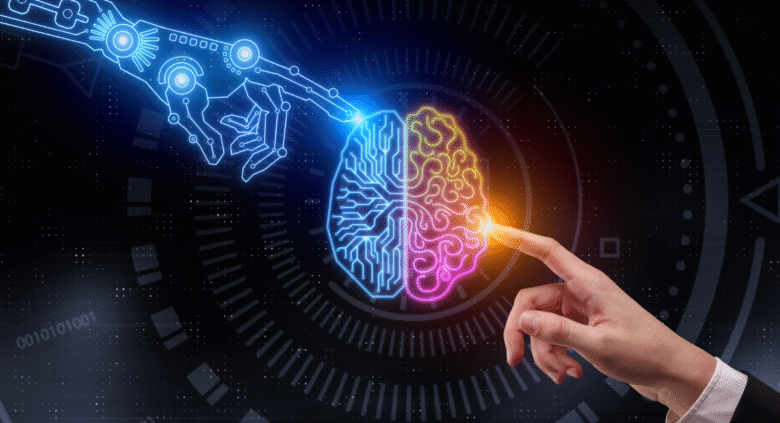Artificial Intelligence (AI) is rapidly revolutionizing emerging technologies across industries and in the workplace. AI helps improve decision-making while automating tasks to increase efficiency and productivity. AI systems identify patterns in data to accomplish specific tasks, like recognizing faces in photographs or translating languages. Their capabilities are powered by machine learning algorithms and deep learning—an approach inspired by human neural systems.
1. AI-Driven Automation
AI drives business automation, helping companies work smarter and faster. AI-powered solutions streamline repetitive processes like fraud detection in banking or routing customer support inquiries to the most qualified agent for an individualized response.
AI can also reduce human errors by following structured algorithms, providing pinpoint accuracy in industries like finance, healthcare, and manufacturing. AI also accelerates innovation by quickly recognizing opportunities and flagging risks in data. AI can even perform creative tasks like writing initial marketing copy or designing unique visuals using generative algorithms—freeing employees up for higher-value tasks!
2. AI-Powered Robots
AI-powered robots take over digital and physical tasks that would otherwise fall on humans, freeing up time for higher-value jobs to be performed by human employees. This enables businesses to streamline operations while quickly responding to threats or opportunities without disrupting workflow.
3PLs have adopted AI-powered robots as part of their warehouse management strategies in order to reduce costs and boost efficiency, while healthcare companies use robots for monitoring patient vitals as well as helping with daily tasks such as medication delivery. Robots also help increase safety in dangerous environments by performing data collection or safety inspection tasks without placing human lives at risk. Furthermore, they can work alongside humans for maximum workplace productivity.
3. AI-Powered Chatbots
AI chatbots allow businesses to quickly and effectively respond to customer inquiries through an intuitive user experience. These bots automate simple tasks, collect data, and help support teams resolve complex issues more quickly than human agents could ever hope for. Conversational AI chatbots utilize natural language processing to interpret user input and recognize specific intent. Furthermore, these AI bots will continue to learn and self-improve over time.
Business uses for these technologies include customer service on websites and messaging apps, human resource management, e-commerce, and answering basic questions in voice-activated virtual assistants (VA), as well as automating network planning and reconfiguration processes in telecom networks while optimizing resources and offering customized recommendations to customers.
4. AI-Powered Self-Driving Cars
AI technology is revolutionizing how cars are driven and designed. Thanks to AI-enabled self-driving cars, these autonomous vehicles can detect obstacles quickly to prevent accidents from happening and optimize driving patterns for safety and efficiency purposes, as well as manage traffic flow more effectively. Reactive machines, such as chatbots and voice recognition systems that abide by fixed algorithms, are examples of reactive machines.
Cars equipped with artificial intelligence feature accident prevention systems that analyze drivers’ behaviors and warn them when they veer off course, optimize braking and acceleration, reduce carbon emissions, and boost fuel economy to enhance road safety and reduce rear-end collision rates. These features reduce rear-end collision rates and enhance road safety.
5. AI-Powered Virtual Assistants
AI virtual assistants simplify workflows and increase productivity by automating tasks, improving user experience, and adapting to changing business requirements. Their persistent memory and adaptive learning features allow them to continually optimize their performance over time by storing feedback conversations and outcomes gathered during interactions.
Industries are increasingly utilizing AI assistants to enhance productivity and boost employee efficiency. Telecommunications are one area in which AI can help: customer service, network administration, and security, to name but three examples. Automation technologies can answer basic customer service inquiries and resolve routine IT tickets without human involvement, freeing up more time for high-value tasks. They can also transcribe meetings, create summaries, and generate follow-ups for distributed teams.
6. AI-Powered Intelligent Tutoring Systems
AI-powered tutoring systems offer customized learning experiences for students. These tools analyze student responses and modify lessons accordingly, helping students master concepts at their pace. Features that help achieve this include filling in skill gaps, making learning fun through games, and using real-life situations for training—like allowing business students to practice customer service skills with AI role-play in a virtual classroom.
Artificial intelligence can aid decision-making across industries thanks to its ability to process data and identify patterns. This is particularly evident in the telecom industry, where AI is revolutionizing customer service, network management, and more. Park University’s online Master of Education in Educational Technology for Teachers equips educators with skills for incorporating emerging technologies like AI into classroom instruction.
7. AI-Driven Transportation
AI enhances transportation via predictive analytics, traffic signal optimization, and intelligent navigation systems. These tools help reduce congestion while simultaneously helping individuals travel safely and efficiently. AI technology used in self-driving cars helps analyze data, identify obstacles, and increase driving efficiency. Furthermore, it optimizes fuel consumption and maintenance expenses, thereby increasing vehicle reliability while decreasing operating expenses.
Air travel can reap significant advantages from AI as well, with flight delays costing airlines more than $39 billion each year. AI-enhanced tools can detect flight disruptions, reroute planes and trains accordingly, and make better decisions that boost customer experience and operational efficiency.
8. AI-Powered Security
Artificial intelligence systems offer reliable 24/7 performance across various domains ranging from cybersecurity monitoring and healthcare diagnostics to customer support, customer loyalty management, and renewable energy models. AI systems also assist in speeding drug discovery by deciphering genetic data for personalized medicine purposes as well as optimizing renewable energy models.
However, these advanced technologies must be properly managed, or else they may become vulnerable to cyberattacks that traditional file-scanning-based malware defenses cannot detect—leading to operational disruptions, regulatory violations, and reputational harm. Proactive threat hunting techniques can help detect hidden or unknown threats, reducing risks in GenAI infrastructures and ensuring that security protocols are followed. Security teams need to have a complete view of GenAI systems to make sure all rules are followed and to actively look for hidden threats.
9. AI-Powered Reliability
AI can be the ultimate productivity booster for SRE teams. From acting as an incident scribe and automating diagnostics to analyzing patterns at scale, AI is an invaluable tool that could make teams even more effective and systems stronger. However, success with AI comes from strategically applying it where it will benefit people most while making systems stronger overall.
Identifying Potential Failures
Both supervised and unsupervised machine learning techniques help SRE teams identify anomalies. Machine learning models can learn from labeled data to make predictions on new, unseen information.
Robotic Process Automation and Technical Natural Language Processing (NLP) applications of machine learning help streamline the annotation of maintenance work orders by increasing data extraction and operational decision-making, leading to increased reliability and cost savings in the telecoms industry.



